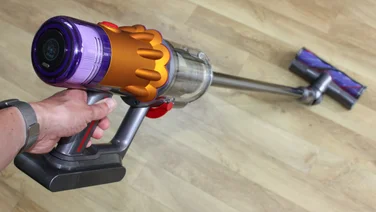To help us provide you with free impartial advice, we may earn a commission if you buy through links on our site. Learn more

Whether it’s grease laden pipes causing your kitchen sink to back up, or a hair-clogged drain leaving you standing in a foot of water while you shower, a blocked sink or drain can be a real pain to live with. Unfortunately, these blockages can often also be a pain to deal with, as they often won’t resolve on their own and can prove tough to shift when you try to address the problem.
To help alleviate your struggle, we’ve put together a short list of the best tried-and-tested ways to clear out your pipes and get things moving as usual. To get the best advice possible, we also spoke to Georgina Shepherd, Home Services Expert at Housekeep, to get her top tips and tricks for clearing blockages.
The 6 best ways to unclog your sink
From boiling your kettle to calling up a professional, these are the best ways to clear a blockage in your kitchen or bathroom sink. Whether you’re dealing with a slow drainer (a partial blockage) or a no-drainer (a total blockage), one of our methods should hopefully be able to sort your issue and get your water flowing clean and clear once more.
1. Boiling water
- Great for mild blockages

If you have a partial blockage i.e. one where some water is still passing through the drain, albeit slowly, then we recommend starting off by trying this simple, easy fix before trying anything more involved. Simply, boil your kettle and pour the water down to sink. Georgina adds: “Boiling water is a great way to clear mild blockages caused by grease or soap buildup – just make sure to pour it in stages so it has time to work through the blockage.” While prolonged exposure to boiling water can cause some damage to PVC pipes, unless your blockage is very serious and the water becomes trapped in the pipe for an extended period, this shouldn’t be an issue.
2. Baking soda and vinegar
- Leave it to sit for 30 minutes
I cover the cleaning beat for Expert Reviews and have been good-naturedly mocked (at least I hope it was good natured… it wasn’t – Will) for how often I recommend resorting to these two classic household cleaners. But what can I say, we all have them in our homes and they can tackle everything from scaly kettles to pans, patios and yes, even sink blockages. Georgina is also a fan, saying that “If [boiling water] doesn’t do the job, pouring some baking soda and white vinegar down your drain is usually quite effective. Let it sit for around 30 minutes before flushing it out with hot water.”
3. Use a plunger
- Create a tight seal by covering the cup with water
A puppy isn’t just for Christmas and, likewise, plungers aren’t just for toilets. If the chemical concoction listed above doesn’t clear your blockage, you can always try fighting fire with fire and using a little elbow grease to clear the grease and gunk from your drains. Adding her expertise, Georgina gives some technical advice: “When using a good old-fashioned plunger, the key is to create a tight seal around the drain. First, place the plunger over the plughole, then fill the sink with enough water to cover the plunger’s cup. Then pump it up and down several times – this should create a seal and build pressure that can help bring the clog up.”
4. Try a drain snake
- Not to be confused with an actual snake

When it comes to physical blockages, especially hair-clogged shower drain, I’ve had great first-hand success clearing them with a drain snake. If you’re unfamiliar with this tool, Georgina can explain “A drain snake (AKA an auger) is basically a long, flexible wire you feed into the drain. You can either break up the blockage or hook onto it to pull it out. It’s especially handy for hair clogs and those deep blockages that a plunger just can’t touch.”
5. Get some dedicated drain cleaner
- We recommend Buster Bathroom Plughole Unblocker
- Avoid bleach
If you’re not in the mood to use a household method or to get physical with your blockage, then sometimes the most straightforward solution is to go out and get some dedicated drain cleaner. Our best drain unblocker roundup features products specifically designed for kitchens or bathrooms, eco-friendly products and more, so be sure to check it out. Just make sure to read the instructions carefully before use and to always follow the manufacturer’s guidance.
If you were thinking about using bleach to clear your blockage, hold your horses, as Georgina has this to say: “Bleach isn’t really that effective at clearing blockages because it doesn’t dissolve grease buildup. Plus, if you have older pipes, it can actually damage them. So it’s best to avoid bleach where possible. If you do decide to use bleach, make sure you dilute it with water and never mix it with other chemicals or cleaning products – mixing bleach with other substances can create toxic fumes, which is really dangerous.”
6. Call a plumber
If you’re dealing with a persistent slow drainer or an immovable no drainer, then it may save you a lot of time, effort and potential damage to your pipes to just call in a professional. Home Services Expert Georgina also thinks this is often the best option long-term, saying “Plumbers come equipped with the right tools to fix the problem properly without causing damage. Plus, they can spot other plumbing issues while they’re there, so it’s a smart move in the long run.”






